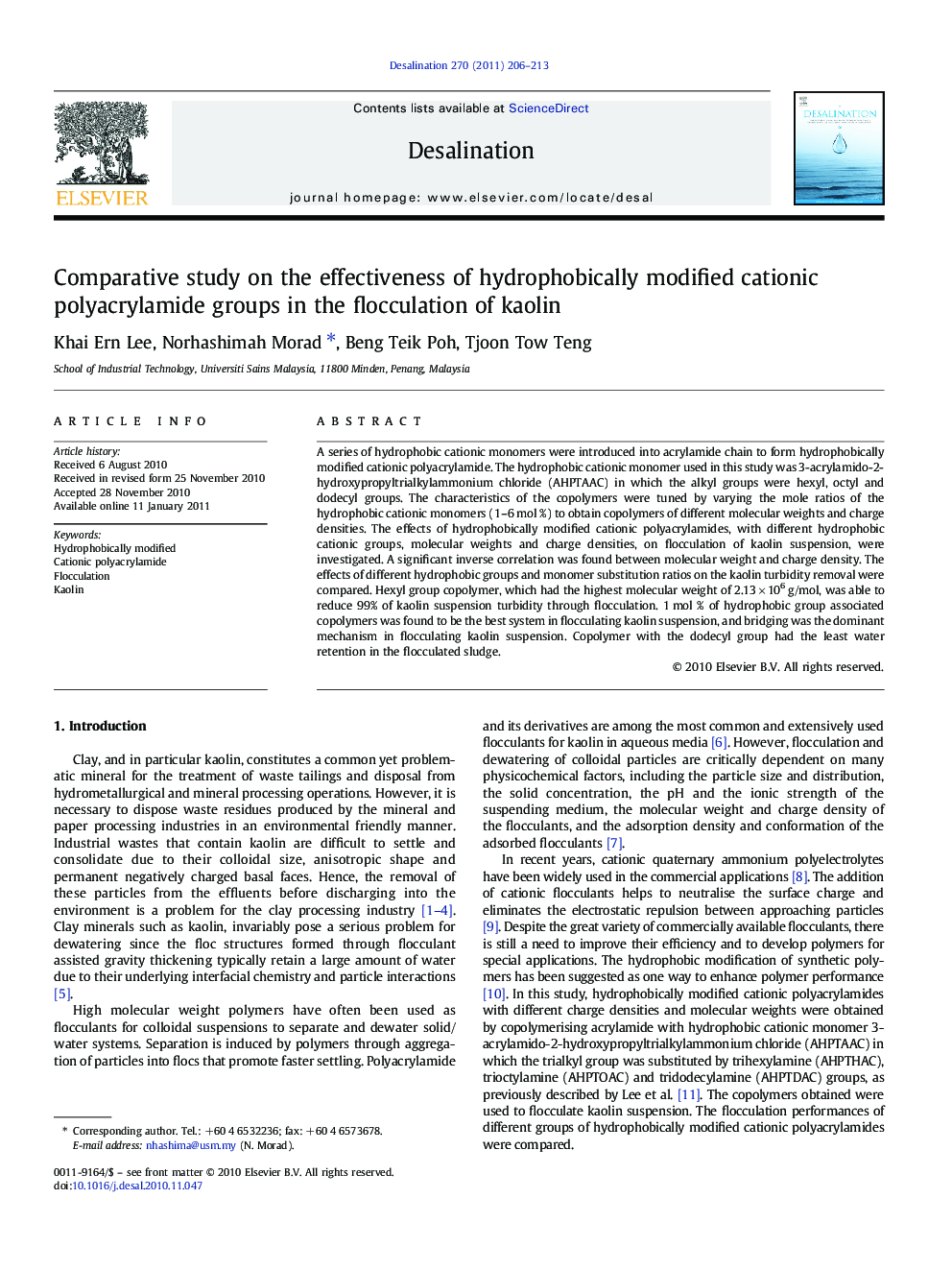| کد مقاله | کد نشریه | سال انتشار | مقاله انگلیسی | نسخه تمام متن |
|---|---|---|---|---|
| 625271 | 1455421 | 2011 | 8 صفحه PDF | دانلود رایگان |

A series of hydrophobic cationic monomers were introduced into acrylamide chain to form hydrophobically modified cationic polyacrylamide. The hydrophobic cationic monomer used in this study was 3-acrylamido-2-hydroxypropyltrialkylammonium chloride (AHPTAAC) in which the alkyl groups were hexyl, octyl and dodecyl groups. The characteristics of the copolymers were tuned by varying the mole ratios of the hydrophobic cationic monomers (1–6 mol %) to obtain copolymers of different molecular weights and charge densities. The effects of hydrophobically modified cationic polyacrylamides, with different hydrophobic cationic groups, molecular weights and charge densities, on flocculation of kaolin suspension, were investigated. A significant inverse correlation was found between molecular weight and charge density. The effects of different hydrophobic groups and monomer substitution ratios on the kaolin turbidity removal were compared. Hexyl group copolymer, which had the highest molecular weight of 2.13 × 106 g/mol, was able to reduce 99% of kaolin suspension turbidity through flocculation. 1 mol % of hydrophobic group associated copolymers was found to be the best system in flocculating kaolin suspension, and bridging was the dominant mechanism in flocculating kaolin suspension. Copolymer with the dodecyl group had the least water retention in the flocculated sludge.
Research Highlights
► Polyacrylamide has been modified with cationic hydrophobic groups: AHPTHAC, AHPTOAC and AHPTDAC.
► Charge densities and molecular weights varied with the addition of different concentration of the hydrophobic group.
► Molecular weight and change density have an inverse relationship.
► The bridging mechanism was the dominant mechanism in flocculating kaolin suspension.
Journal: Desalination - Volume 270, Issues 1–3, 1 April 2011, Pages 206–213